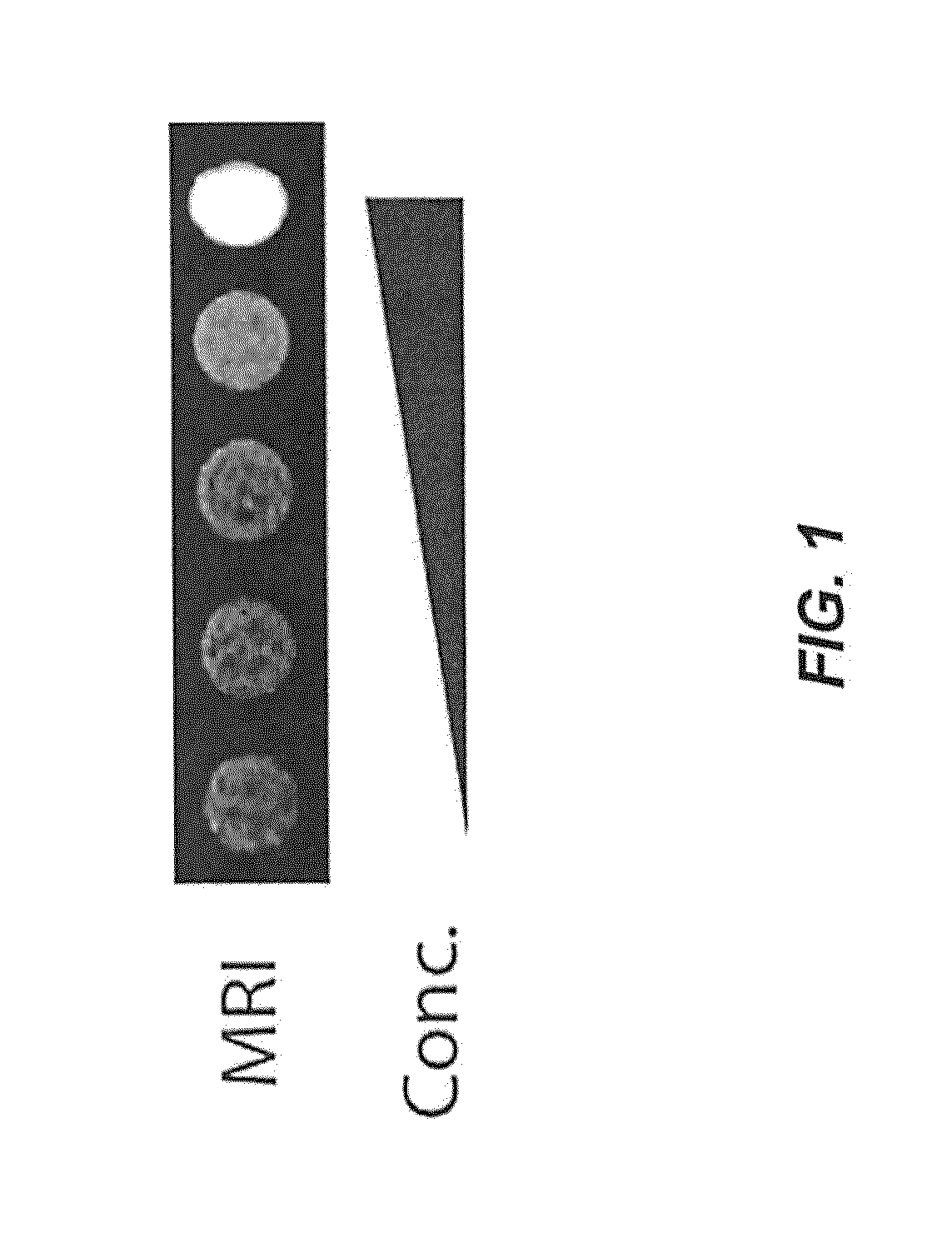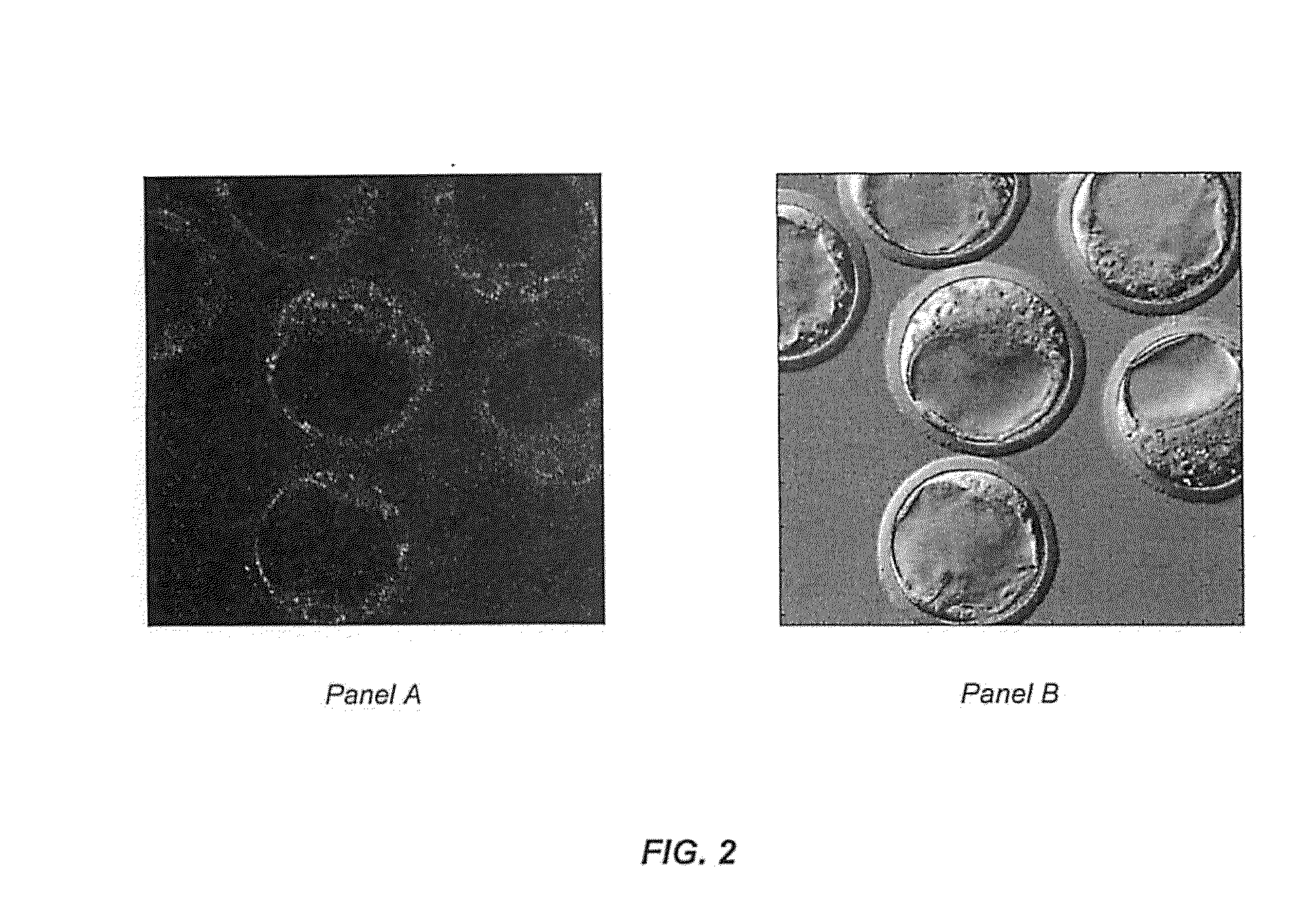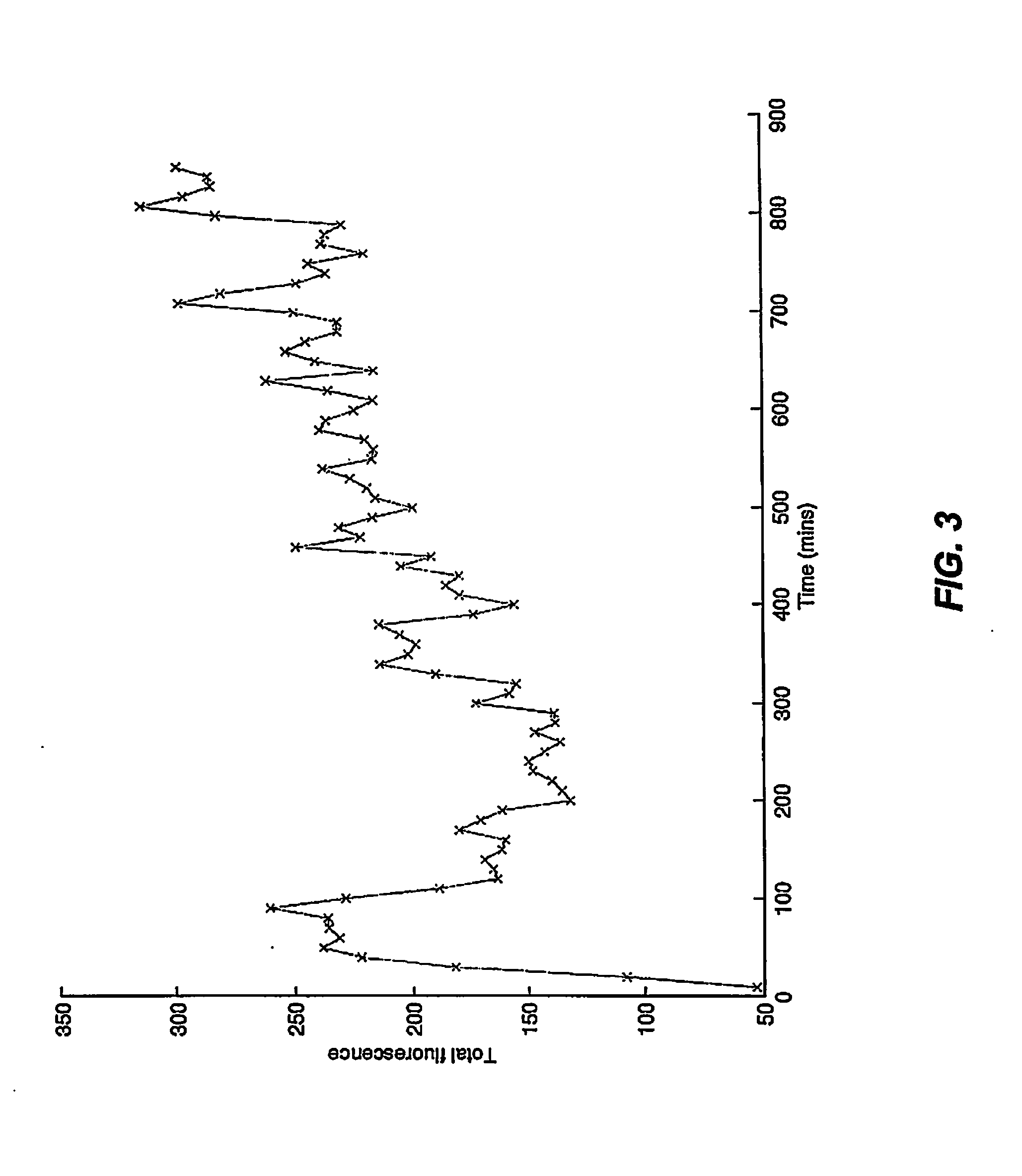Host Cells with Artificial Endosymbionts
a technology of endosymbionts and host cells, applied in the field of endosymbiosis, artificial endosymbionts, magnetotactic bacteria, can solve the problem that none of these alterations are heritable to daughter cells
- Summary
- Abstract
- Description
- Claims
- Application Information
AI Technical Summary
Benefits of technology
Problems solved by technology
Method used
Image
Examples
example 1
Microinjection of gfp+AMB into Murine Cells
[0082]A. Construction of gfp+AMB.
[0083]Expression vectors for eGFP, one including a Shine-Dalgarno sequence upstream of the gfp gene and one without a Shine Dalgarno, sequence were cloned into cryptic broad host range vector pBBR1MCS-2 (Kovach, M. E., et al. Four new derivatives of the broad-host-range cloning vector pBBR1MCS, carrying different antibiotic-resistance cassettes. Gene 166, 175-176, (1995) (which is incorporated by reference in its entirety for all purposes)). AMB (ATCC 700264) was transformed with this construct. (Matsunaga, T. et al. Complete genome sequence of the facultative anaerobic magnetotactic bacterium Magnetospirillum sp. strain AMB-1. DNA Res. 12, 157-166 (2005); Burgess J. G., et al. Evolutionary relationships among Magnetospirillum strains inferred from phylogenetic analysis of 16S rDNA sequences. J. Bacteriol. 175: 6689-6694 (1993); Matsunaga T, et al. Gene transfer in magnetic bacteria: transposon mutagenesis a...
example 2
Phagocytic Entry of AMB
[0092]Receptor mediated: The in1AB gene is amplified from L. monocytogenes genomic DNA (ATCC 19114) and is inserted into pBBR1MCS-5,107 the gentamicin cognate of pBBR1MCS-2 (Kovach, M. E., et al. Four new derivatives of the broad-host-range cloning vector pBBR1MCS, carrying different antibiotic-resistance cassettes. Gene 166, 175-176, (1995)), and gfp+in1AB+AMB is generated. The gfp+in1AB+ AMB is co-cultured with eukaryotic host cells, including common epithelial tumor cell lines Coco-2, MDA-MB231 and MCF7, non-epithelial tumor cell lines, such as HT-1080 and HL60, and murine stem cells. Fluorescent microscopy and FACS are used to monitor and quantify internalization and intracellular location.
[0093]Expression of pore-forming haemolysin (hlyA) in AMB is achieved through amplification of hlyA from L. monocytogenes genomic DNA (ATCC 19114). The amplified hlyA is inserted into pBBR1MCS-3 (the tetracycline cognate of pBBR1MCS-2) which is then used to transform gfp...
example 3
Regulation of AMB Growth
[0095]Regulation of AMB growth in embryonic stem cells can be regulated as follows. Coleoptericin-A (ColA) is amplified from total Sitophilus oryzae cDNA. Expression of ColA in beetles of genus Sitophilus regulates titers of γ-Protobacterium, which has naturally developed close symbiotic relationship the beetles, and resides in specific cells called bacteriocytes. (Login, F. H., Balmain, S., Vallier, A., Vincent-Monegat, C., Vigneron, A., Weiss-Gayet, M., Rochat, D., Heddi, A. Antimicrobial peptides keep insect endosymbionts under control. Science 334(6054): 362-365 (2011) (which is incorporated by reference in its entirety for all purposes)).
[0096]Murine embryonic stem cells comprising gfp+AMB are treated using a neural differentiation protocol. MTB expression levels are quantified using qPCR and fluorescent microscopy. Amplified colA is then expressed in the gfp+AMB embryonic stem cells. A promoter is selected to provide optimal ColA expression levels.
PUM
 Login to View More
Login to View More Abstract
Description
Claims
Application Information
 Login to View More
Login to View More - R&D
- Intellectual Property
- Life Sciences
- Materials
- Tech Scout
- Unparalleled Data Quality
- Higher Quality Content
- 60% Fewer Hallucinations
Browse by: Latest US Patents, China's latest patents, Technical Efficacy Thesaurus, Application Domain, Technology Topic, Popular Technical Reports.
© 2025 PatSnap. All rights reserved.Legal|Privacy policy|Modern Slavery Act Transparency Statement|Sitemap|About US| Contact US: help@patsnap.com



